Smooth Operator
(BluuGnome version of the Fiddlestick)
Pull Cord Knots
The bowline knot is the go to knot for attaching a pull line to the
Smooth Operator. How to tie the bowline using 1/8th inch
Dyneema cord or standard rappel rope is covered in the
Smooth Operator
detailed how to page. For information on those knots go
check out the page. Below are some other knots you may want to
use with the Smooth Operator.
The overhand on a bight is another easy to use knot for attaching
the pull line.
This is my go to knot to use if attaching the pull line to the
Smooth Operator before it is inserted in the stone knot. If you tie
the pull line to the Smooth Operator prior to inserting it in the stone
knot, the pull line is threaded through a hole in the Smooth
Operator
then an overhand on a bight is tied with the Smooth Operator in the
bight.
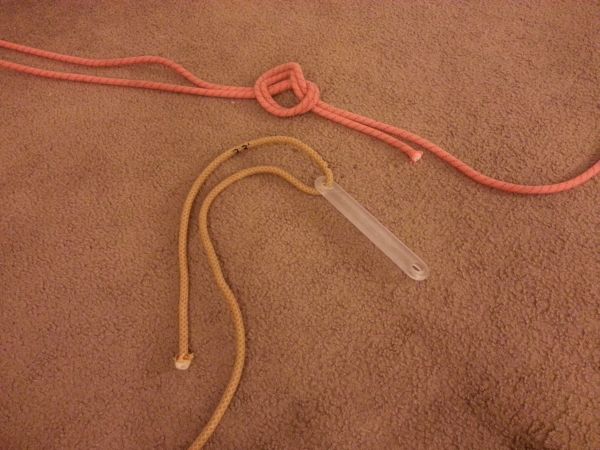 1.)
Insert the end of the pull line through the Smooth Operator.
1.)
Insert the end of the pull line through the Smooth Operator.
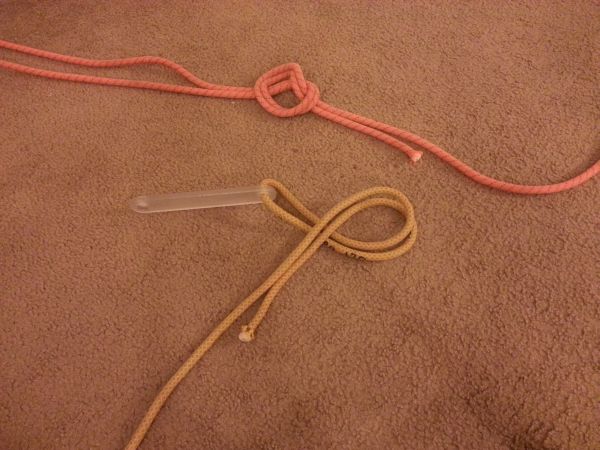 2.)
Form a loop.
2.)
Form a loop.
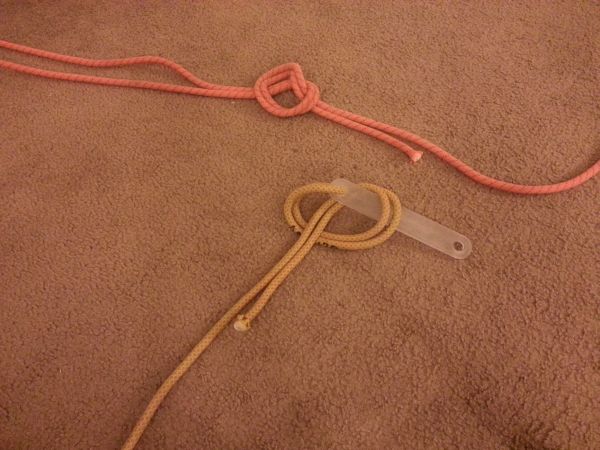 3.)
Thread the Smooth Operator through the loop to create an overhand knot.
3.)
Thread the Smooth Operator through the loop to create an overhand knot.
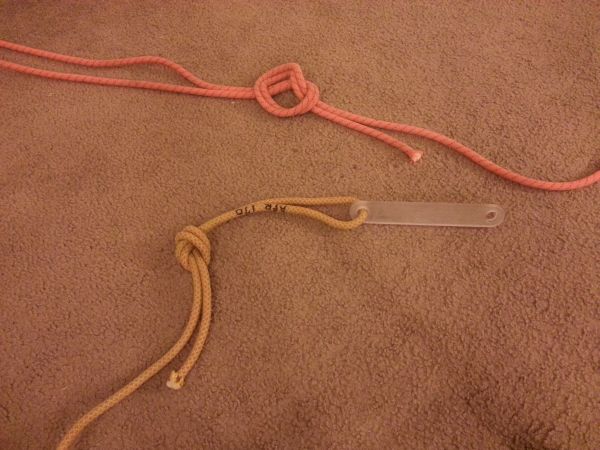 4.)
Cinch down the knot.
4.)
Cinch down the knot.
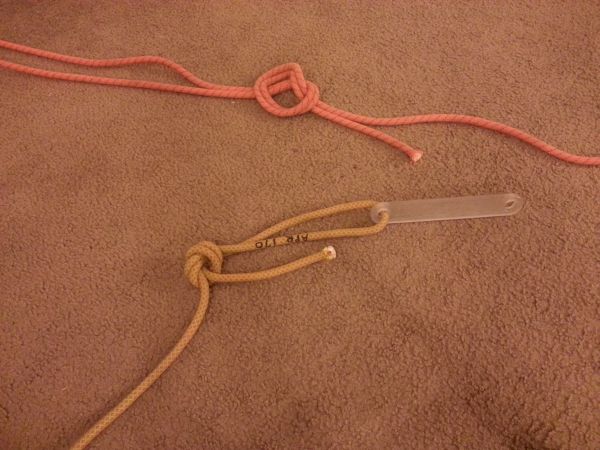 5.)
If you are concerned about the Smooth Operator getting stuck in
constrictions during pull it is a good idea to have make sure the
tail of the knot is not able to reach backup to the Smooth Operator.
In most case this is not an issue but thought is might be worth
mentioning.
5.)
If you are concerned about the Smooth Operator getting stuck in
constrictions during pull it is a good idea to have make sure the
tail of the knot is not able to reach backup to the Smooth Operator.
In most case this is not an issue but thought is might be worth
mentioning.
If the pull line is attached after the Smooth Operator is inserted in
the stone knot, an overhand knot can be tied via a
rethread. In this case the bowline
may be an easier choice, just be sure to cinch it down tight.
If you choose to tie the overhand rethread below here is how you do
it.
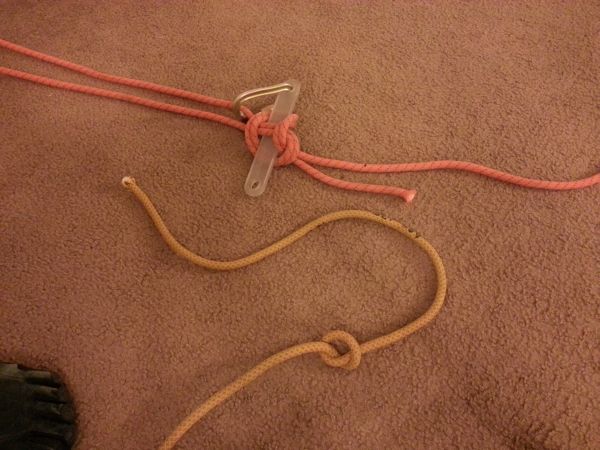 1.)
Tie a loose overhand knot in the rope about 2.5 feet from the end.
1.)
Tie a loose overhand knot in the rope about 2.5 feet from the end.
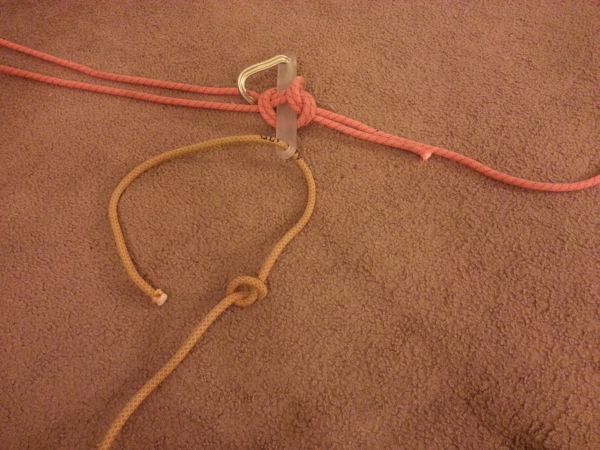 2.)
Thread the rope through the Smooth Operator.
2.)
Thread the rope through the Smooth Operator.
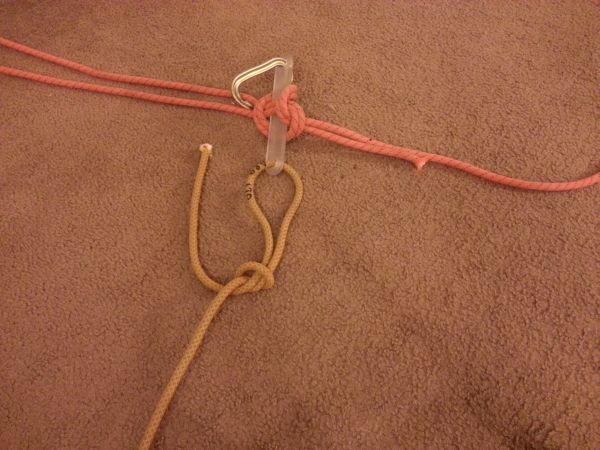 3.)
Use the tail to rethread the overhand knot following the rope back
through the knot.
3.)
Use the tail to rethread the overhand knot following the rope back
through the knot.
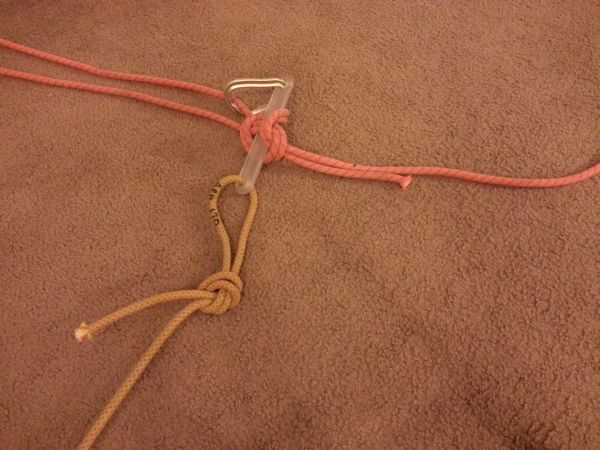 4.)
Cinch down the knot.
4.)
Cinch down the knot.
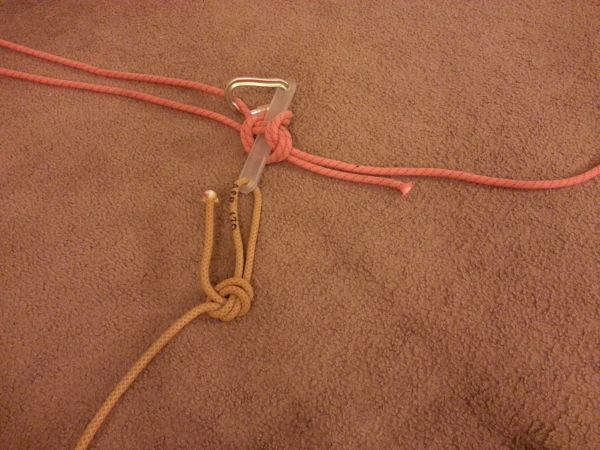 5.)
If you are concerned about the Smooth Operator getting stuck in
constrictions during pull it is a good idea to make sure the
tail of the knot is not able to reach backup to the Smooth Operator.
In most case this is not an issue but thought is might be worth
mentioning.
5.)
If you are concerned about the Smooth Operator getting stuck in
constrictions during pull it is a good idea to make sure the
tail of the knot is not able to reach backup to the Smooth Operator.
In most case this is not an issue but thought is might be worth
mentioning.
Here is a video showing how to tie the overhand knot on a bight and
using the rethread method.
A variation is to tie an overhand knot with a reverse
rethread. The overhand knot with reverse rethread is marginally larger than the standard
rethread but has a couple of advantages that may prove useful in some
situations. The reverse rethread version ends with the tail
pointing up toward the Smooth Operator rather than down toward the
bottom of the rappel. This reduces the chances of the tail
getting caught on something and bunching in a crack. The other
advantage to the reverse rethread is the ability to pivot and roll
more easily over sharp lips, similar to the way an EDK behaves.
To tie the reverse rethread variation, tie it the same way as the
rethreaded overhand knot but when starting to rethread the tail into
the overhand knot start from the side of the knot away from the
Smooth Operator.
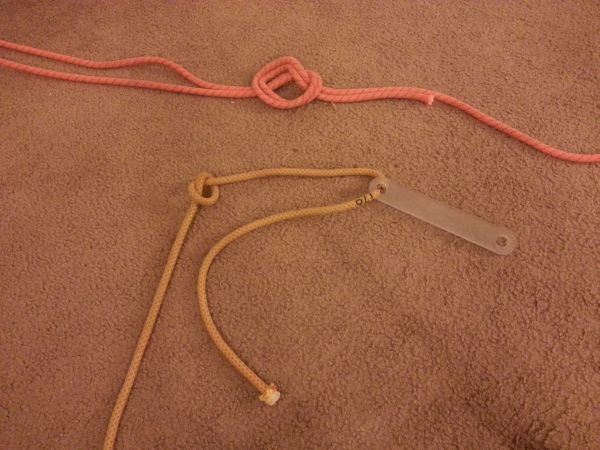 1.)
Tie a loose overhand knot in the rope about 2.5 feet from the end.
1.)
Tie a loose overhand knot in the rope about 2.5 feet from the end.
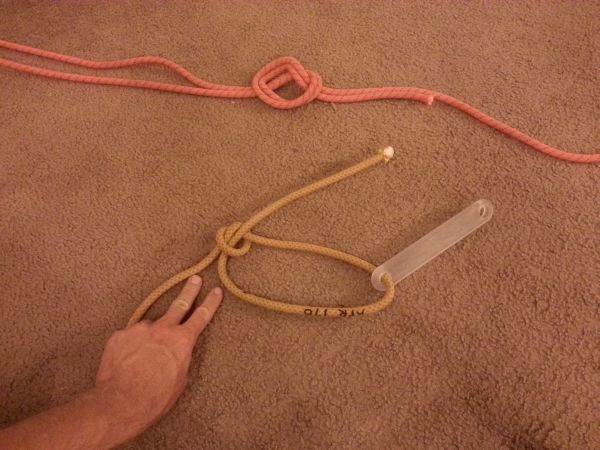 2.)
Thread the rope through the Smooth Operator then rethread the overhand
knot but start from the side of the knot that is away from the
Smooth Operator.
2.)
Thread the rope through the Smooth Operator then rethread the overhand
knot but start from the side of the knot that is away from the
Smooth Operator.
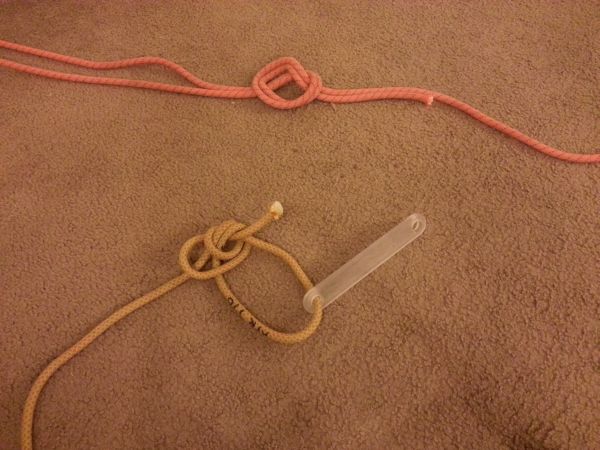 3.)
Use the tail to rethread the overhand knot following the rope back
through the knot. You will end up with one rope pointing down
toward the pull and the tail pointing up toward the Smooth Operator.
3.)
Use the tail to rethread the overhand knot following the rope back
through the knot. You will end up with one rope pointing down
toward the pull and the tail pointing up toward the Smooth Operator.
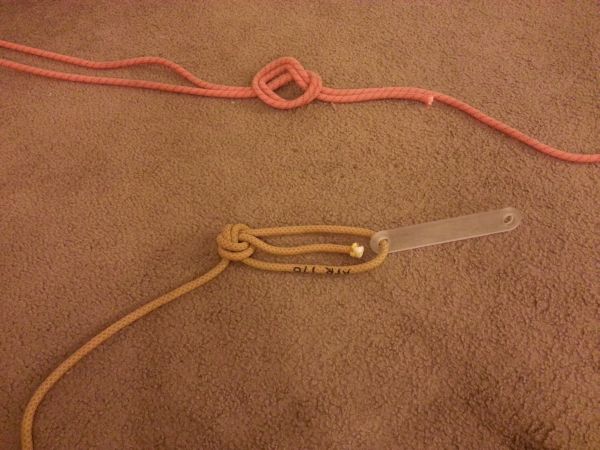 4.)
If you are concerned about the Smooth Operator getting stuck in
constrictions during pull it is a good idea to have make sure the
tail of the knot is not able to reach backup to the Smooth Operator.
In most case this is not an issue but thought is might be worth
mentioning.
4.)
If you are concerned about the Smooth Operator getting stuck in
constrictions during pull it is a good idea to have make sure the
tail of the knot is not able to reach backup to the Smooth Operator.
In most case this is not an issue but thought is might be worth
mentioning.
Here is a video showing how to tie the reverse rethread overhand
knot on the Smooth Operator.
Rather using the bowline, overhand knot or the reverse rethread overhand knot
here are a couple helpful hints. Leave at least 4 inches of
tail on the knot after it is tied. Make sure the tail is short
enough that it can not extend up to the Smooth Operator when the rope is
being pulled. Keeping the tail so it will not reach the
Smooth Operator during pull will reduce the chances of the tail and the
Smooth Operator trying to feed through a constriction at the same time.
In order to leave the tail at least 4 inches long and still not
reach up to the Smooth Operator during the pulling process a larger loop
is made in the rope where tied to the Smooth Operator.